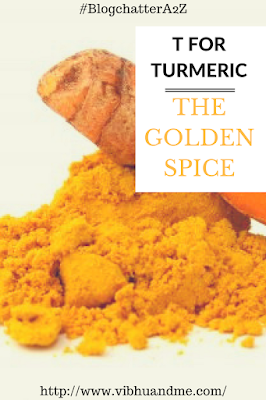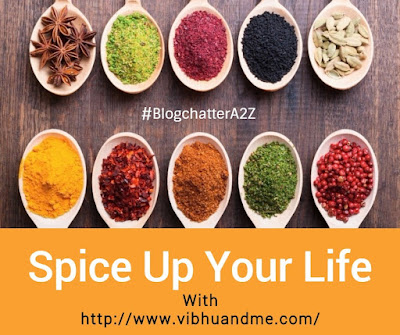Spices have been closely associated with cultural traditions, preservation, medicines, magical spells, and embalming since early human history. And in Indian culture, spices are assimilated so strong that you can find them not only in kitchens but also in Puja ghars and temples. Do you know the clove finds a mention in the epic Ramayana? While these spices are easily available to us in the nearby market only, there was a time when people risked their lives for spices. The trades happened with the exchange of spices and a few spices used to be a symbol of royalty and were accessible to rich only.
Coming back to the point that spices are part of our Hindu culture, these are the items liked by even Hindu Gods and Goddess. And hence devotees offer these spices to the diety during their worship rituals. One such commonly used spice is assumed symbol of the Sun, good luck and fertility. I am talking about Turmeric, a beautiful yellow colored spice which is more than being just a staple item in our kitchens.
T For Turmeric
Turmeric is best known for its spicy flavor and the bold yellow color that it gives to our food. Just like Chili, it is hard to image Indian cooking without Turmeric. Turmeric is a member of Ginger family, and like Ginger, it too is a tropical plant. Turmeric is the boiled, dried, cleaned and polished root of the plant. Because of its brilliant yellow color, turmeric is also known as "Indian saffron". Along with coloring foods, it has been used as a dye for clothing as well. Turmeric has a special place in Indian tradition and worship too. It is used to worship God Sun, the Almighty who gives life to us. For Satya Narain Katha, turmeric is a mandatory puja item as Turmeric is used to denote the presence of the living God, Sun.
Haldi (Hindi Name of Turmeric) is also a symbol of the purification in Hinduism. The name is derived from the Sanskrit word haridra, meaning yellow and beautiful. In Hindu marriages, there is always a ‘Haldi' ceremony when the paste of turmeric is applied to the bride and the groom. It emblematizes purifying from all their sins and prepares them for the auspicious ceremonies of the wedding. Now as Turmeric also possess many health benefits, applying the turmeric paste is assumed adding to the beauty and health of the bride and the groom. Hindu people also use turmeric as a tika or tilak. It is assumed that haldi tika gives prosperity and pride to human beings.
In my family, a marriage typically needs 6-7 kgs of turmeric other than what is used in the preparation of food. And of which close to 5 Kgs is sent to groom's house as part of Groom Tikal ceremony. Turmeric is used to give auspicious yellow color to everything being used during marriage customs. And of course, turmeric ubtan is used in Haldi ceremony. No matter how much I talk about the usage of Turmeric in our lives, it seems less. It is there in our food, in medicines, in home-remedies, in beauty treatments, in religious ceremonies, a dye in the textile industry and even in marriage customs also.
History of Turmeric
The use of turmeric is mentioned dates back nearly 4000 years to the Vedic culture in India, where it was used as a culinary spice and had religious significance both. It reached China by 700 AD, East Africa by 800 AD and West Africa by 1200 AD. In 1280, Marco Polo described this spice, marveling at a vegetable that exhibited qualities so similar to that of saffron. As per Sanskrit medical texts and Ayurvedic and Unani systems, turmeric has a long history of medicinal use in South Asia. Susruta’s Ayurvedic digest, Susruta Samhita back in 250 BC, recommends an ointment containing turmeric to relieve the effects of poisoned food.
Turmeric was also listed in the Ebers Papyrus from Egypt, circa 1500 BC, for use as a dye and in healing wounds. It is believed to have been cultivated in the Gardens of Babylon possibly as early as the 800 BC. Turmeric was used by Buddhists monks who traveled to various parts of the world to dye their robes. In different ancient Sanskrit texts, turmeric has at least 53 different names. Being always associated with Indian culture, turmeric is mentioned in so many places in past. And that is why we Indians love turmeric a lot. When wedding cards were non-existent, people used to send a person with good amount root turmeric to their relatives for inviting them to the wedding. According to spice board of India, India produces nearly all of the world’s turmeric and consumes 80% of it.
Ayurvedic Benefits of Turmeric
In Ayurvedic medicines, turmeric holds a special place. As per Ayurveda, it strengthens the overall energy of the body, relieves gas, dispells worms, improvs digestion, regulates menstruation, dissolves gallstones, and relieve arthritis. It also used as an antiseptic for cuts, burns, and bruises, and as an antibacterial agent. Turmeric is a well-documented as a treatment for various respiratory conditions like asthma, bronchial hyperactivity, and allergy. From ancient times (prescribed by Ayurveda only), turmeric has been used to treat sprains and swelling.
Due to its heating qualities, turmeric helps to balance Kapha and Vata doshas. As it also has a bitter taste, it helps to balance the Pitta dosha, thus making Haldi a tri-doshic remedy. Ayurveda also prescribes turmeric for diabetes, urinary tract infections, anemia and for detoxifying blood and skin.
Dadi Maa Ka Nuskha
If you have not taken Milk and Haldi ever in your life, then you must try it. It is assumed very good for healing internal injuries, for treating intestinal disorders as well as colds and sore throats. Also, Indian ladies have been using Haldi for making their skin glow and also as a remedy for facial hair removal since ages.
How to buy
Turmeric powder is very easily available in every departmental store. 'N' number of brands are selling so-called authentic Haldi Powder for our curries. Then turmeric root is also on hand in spice stores. Many people prefer preparing their own haldi powder from the root itself. And raw turmeric also comes in the vegetable market with the name "Kachchi Haldi" that people use as a vegetable mostly in winters.
If you have not taken Milk and Haldi ever in your life, then you must try it. It is assumed very good for healing internal injuries, for treating intestinal disorders as well as colds and sore throats. Also, Indian ladies have been using Haldi for making their skin glow and also as a remedy for facial hair removal since ages.
How to buy
Turmeric powder is very easily available in every departmental store. 'N' number of brands are selling so-called authentic Haldi Powder for our curries. Then turmeric root is also on hand in spice stores. Many people prefer preparing their own haldi powder from the root itself. And raw turmeric also comes in the vegetable market with the name "Kachchi Haldi" that people use as a vegetable mostly in winters.
(I am taking part in #BlogchatterA2Z and today’s letter is 'T'.)
You can read my other #BlogchatterA2Z posts here :
You can read my other #BlogchatterA2Z posts here :
- A For Alkanet Root - A Magical Spice
- B For Black Salt - A Digestive Stimulant
- C For Cinnamon - God of Spices
- D for Dried Ginger - A More Beneficial Form of Ginger
- E For Edible Silver and Gold Foils
- F For Fennel Seeds - More Than A Mouth Freshener
- G for Green Cardamom - The Queen of Spices
- H For Holy Basil - The King of Herb
- I For Indian Gooseberry - A Super food
- J For Jaggery - A Medicinal Sugar
- K For Kalpasi - An Unknown Treasure
- L For Long Pepper - An Underrated Spice
- M For Mace - The Cousin of Nutmeg
- N For Nutmeg - The Pricey Spice
- O For Onion Seeds - The Flavor Master
- P For Poppy Seeds - The Nutty Savor
- Q For Quinoa And Quatre-Epices
- R For Red Chili - The Fierce Spice
- S For Star Anise - The Beautiful Spice












This is a mother of all spices.
ReplyDelete